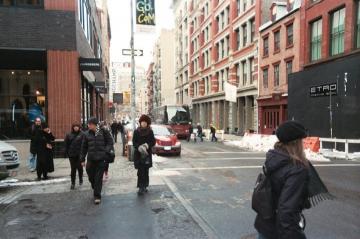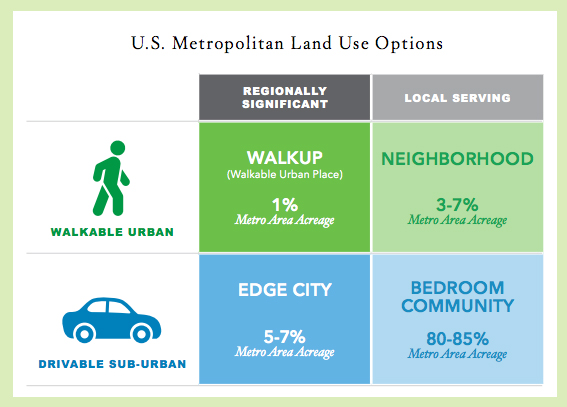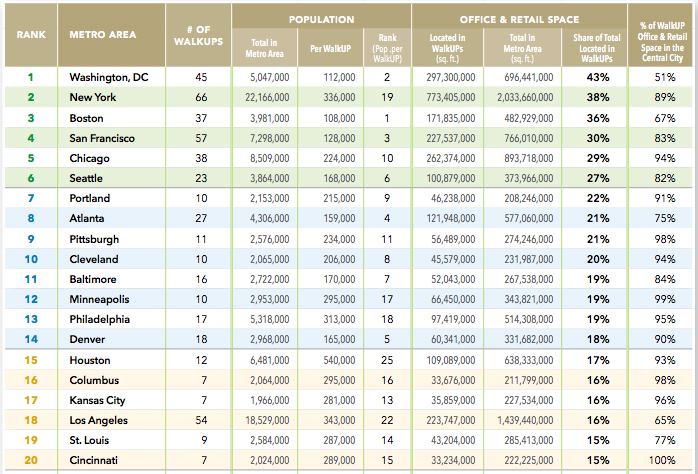A city's pedestrian-friendliness impacts its economy, according to a report done by Christopher Leinberger and Patrick Lynch of the Center for Real Estate and Urban Analysis at George Washington University School of Business.
According to the report, walkable communities have a higher GDP, greater wealth and higher percentages of college grads (see table below). Moreover, there is a “74 premium in rent per square foot in office buildings in walkable areas.”
And the report is not only talking about cities. According to Leinberger, the traditional dichotomy of “walkable urban” and “drivable suburban” is falling out of use. Many urban areas are car-oriented and many suburbs are developing into walker-friendly spaces.
Currently, the top five cities based on the percentage of their "WalkUPs" (walkable urban places) from the total metro area and population are Washington, D.C., New York, Boston, San Francisco, and Chicago.
Click here to read the whole report and learn more.
Screenshots from Foot Traffic Ahead report
© The George Washington University School of Business 2014
Related Stories
| Oct 14, 2011
AIA Continuing Education: optimizing moisture protection and air barrier systems
Earn 1.0 AIA/CES learning units by studying this article and passing the online exam.
| Oct 12, 2011
BIM Clarification and Codification in a Louisiana Sports Museum
The Louisiana State Sports Hall of Fame celebrates the sporting past, but it took innovative 3D planning and coordination of the future to deliver its contemporary design.
| Oct 12, 2011
Vertical Transportation Systems Reach New Heights
Elevators and escalators have been re-engineered to help building owners reduce energy consumption and move people more efficiently.
| Oct 12, 2011
Building a Double Wall
An aged federal building gets wrapped in a new double wall glass skin.
Office Buildings | Oct 12, 2011
8 Must-know Trends in Office Fitouts
Office designs are adjusting to dramatic changes in employee work habits. Goodbye, cube farm. Hello, bright, open offices with plenty of collaborative space.
| Oct 12, 2011
FMI’s Construction Outlook: Third Quarter 2011 Report
Construction Market Forecast: The general economy is seeing mixed signs.
| Oct 12, 2011
Bulley & Andrews celebrates 120 years of construction
The family-owned and operated general contractor attributes this significant milestone to the strong foundation built decades ago on honesty, integrity, and service in construction.
| Oct 12, 2011
Consigli Construction breaks ground for Bigelow Laboratory Center for Ocean Health
Consigli to build third phase of 64-acre Ocean Science and Education Campus, design by WBRC Architects , engineers in association with Perkins + Will
| Oct 11, 2011
AIA introduces five new documents for use on sustainable projects
These new documents will be available in the first quarter of 2012 as part of the new AIA Contract Documents service and AIA Documents on Demand.
| Oct 11, 2011
Pink light bulbs donated to Society of Memorial Sloan-Kettering Cancer Center
For every Bulbrite Pink Light Bulb that is purchased through the Cancer Center Thrift Shop, 100% of the proceeds will be donated to help support breast cancer research, education, screening, and treatment.



















